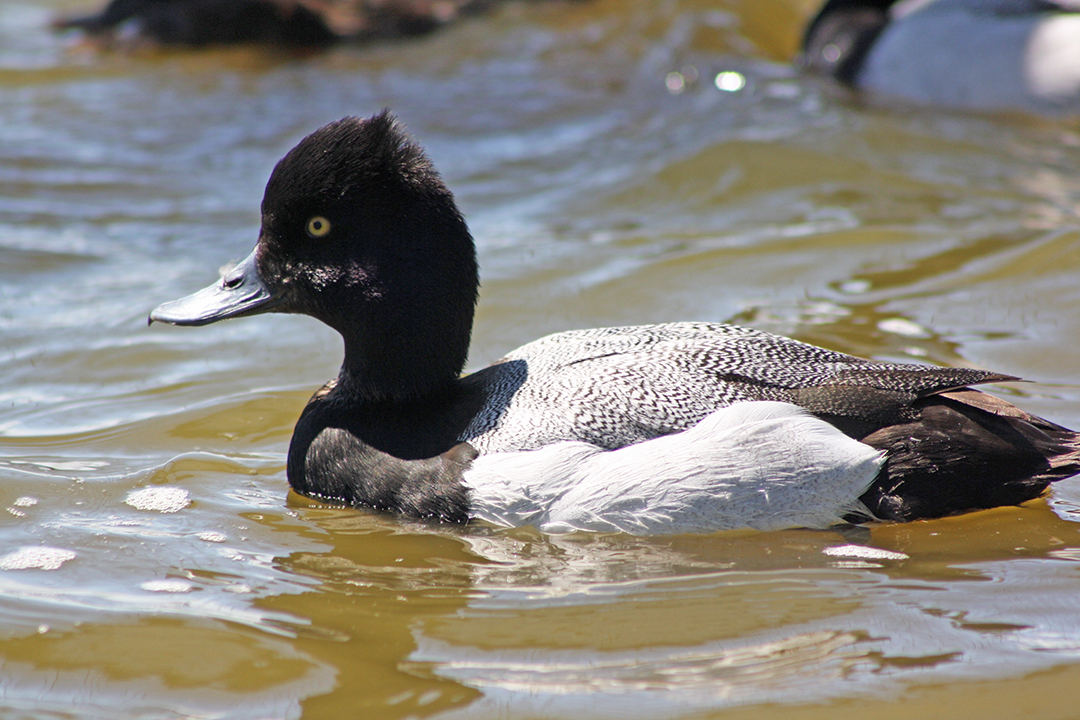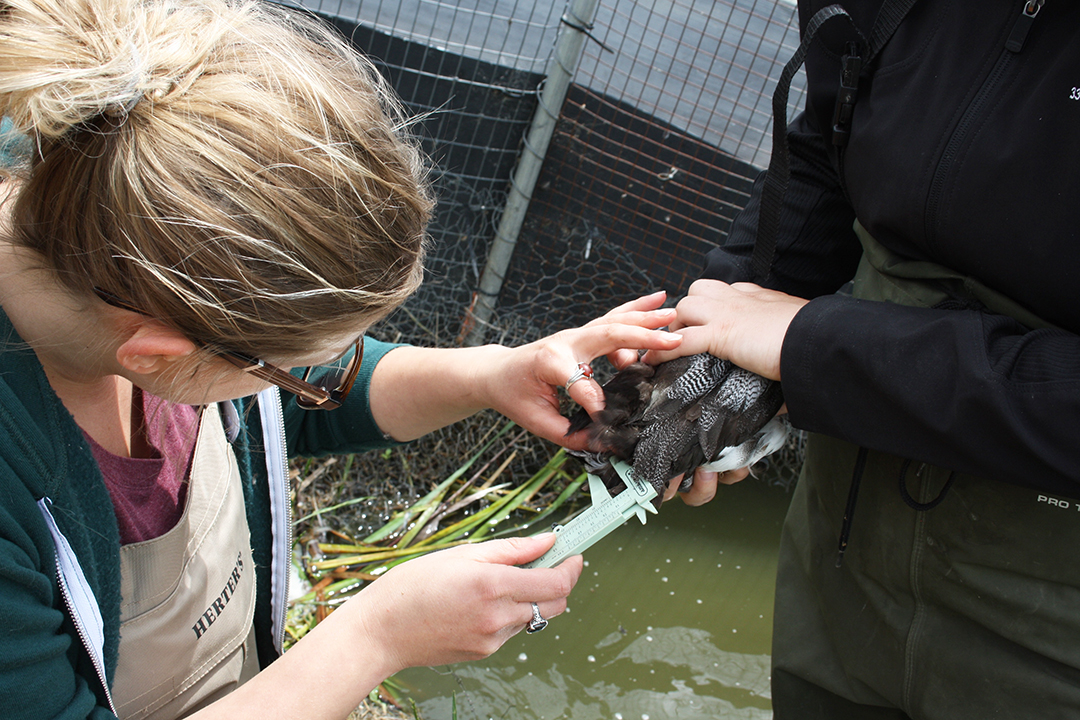
Ducks’ feathers hold key to measuring impact of stress
Habitat loss, changes in weather, food scarcity, predator-versus-prey situations – each day wild animals are faced with these potential stressors. But what’s the cost?
By Toni MoritzDr. Karen Machin, an associate professor in the Western College of Veterinary Medicine’s Department of Veterinary Biomedical Sciences, has dedicated many years to studying the impact of stress on wild species and trying to answer this big question.
“How does stress alter life strategies in wild species and how does that relate to environmental change?” she asks.
During the summer of 2017, Machin and a research student examined the effects of decreased food availability on lesser scaup ducks by studying their feathers.
Although some stressful situations happen naturally, many do not. Climate change, which is accelerated by human activities, is a threat to biological systems globally, and it exacerbates many of the stressors that confront wild animals.
“We know that weather alterations can change food source patterns for many species. If we see that corticosterone is raised when there is less access to food, it helps support the hypothesis that alteration in food patterns may change stress in species,” explains Machin.
“And if there is increased stress, that may make the individual more susceptible to disease, less able to survive severe environmental effects and less likely to reproduce successfully.”
Corticosterone is the stress hormone that animals release in response to a change in environment or a stressor, and it makes a good diagnostic tool for measuring chronic stress in animals.
By measuring the corticosterone levels in the feathers of the birds, the scientists were able to determine their stress levels. In addition, the study was carried out during molting season – an optimal time for measuring corticosterone levels in the feathers.
“Anytime a bird molts, they are creating new feathers that are being bathed in blood during their growth,” says Machin. “As keratin and feathers are being laid down, it starts to trap the corticosterone that is in the blood in a proportional manner and you end up getting a picture of the physiological status of that bird during that time, which gives us a longer-term idea of the stressors that they may have been exposed to.”
The researchers began by separating a captive flock of lesser scaup ducks into two groups. For two weeks, the birds in one group were given as much food as they wanted while those in the other group received 20 per cent less than their feed requirement – a calculation based on the basal metabolic rate for their species.
In the study’s preliminary data analysis, ducks that were exposed to the more stressful situation of decreased food had higher corticosterone in their feathers compared to birds that were not food stressed.
Although short-term increases in corticosterone have an adaptive value, the effects become detrimental when the levels are chronically increased. Sustained chronic levels of corticosterone can affect cognitive ability, growth, body condition, reproduction, immune defenses and overall survival of an animal.
This study can provide scientists with a deeper understanding of the types of environmental conditions that cause increased stress. It can also expand their understanding of the population dynamics of avian species and provide insight into the physiological effects of climate change on all wildlife species.
As humans cause disturbances to the environment and as the effects of climate change become more evident, identifying the causes of chronic stressors on wildlife has become critical to coping with climate change – a difficult multi-faceted global issue.
Toni Moritz of Winnipeg, Man., is a third-year veterinary student who was part of the WCVM’s Undergraduate Summer Research and Leadership program in 2017. Toni’s story is part of a series of articles written by WCVM summer research students.
